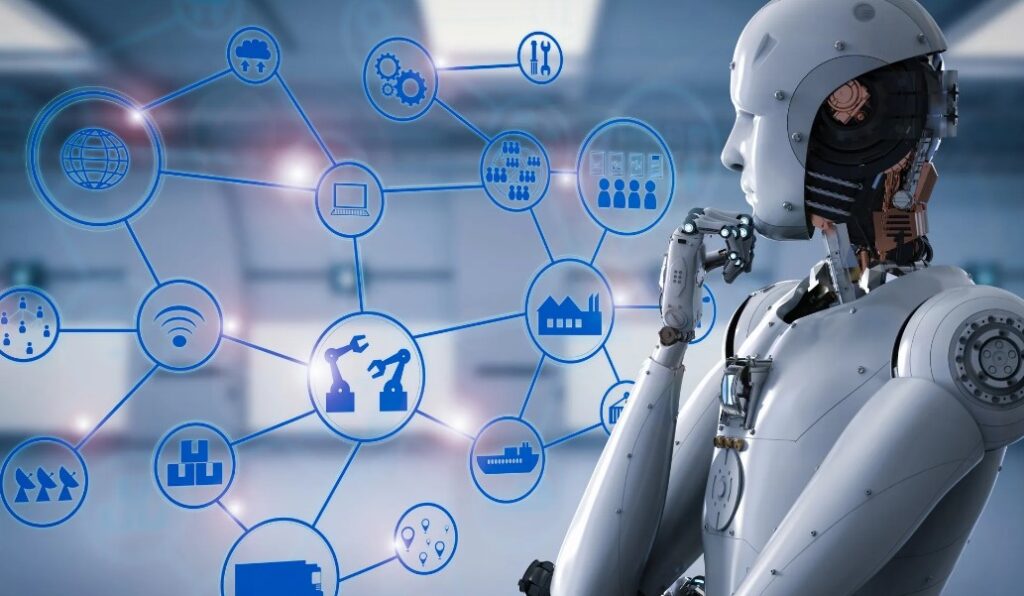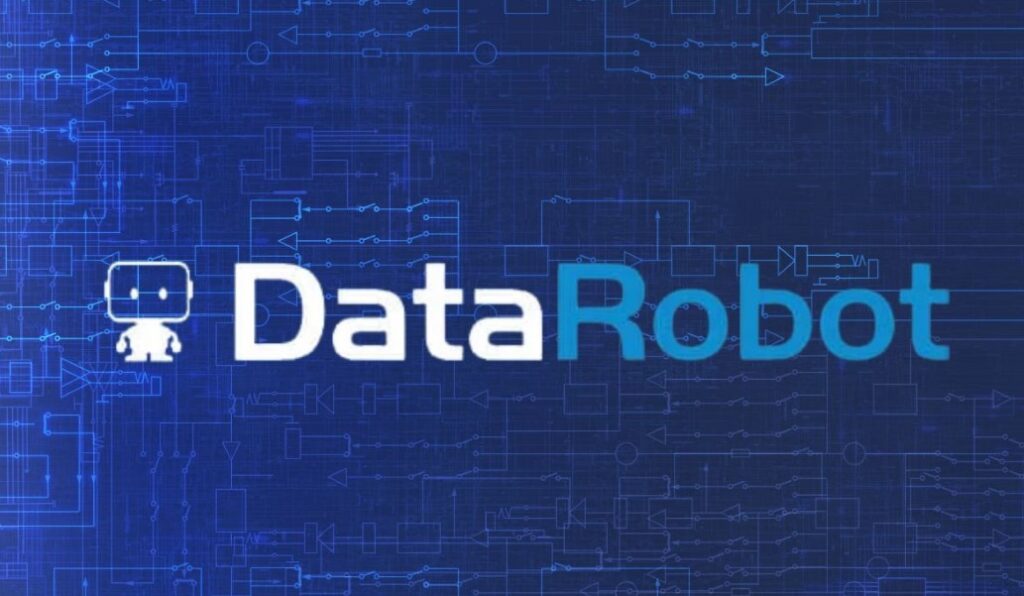Data Robot: Revolutionizing Automated Machine Learning
In recent years, the field of artificial intelligence (AI) and machine learning (ML) has witnessed groundbreaking advancements. One of the companies that have truly revolutionized this space is Data Robot. This platform has emerged as a leader in the realm of automated machine learning (AutoML), making it easier for businesses and developers to build, deploy, and manage machine learning models without requiring extensive coding or deep technical knowledge. This Data has fundamentally changed how organizations of all sizes approach AI and data-driven decision-making.
What is Data Robot?

Data Robot is an AI-powered platform that specializes in automating machine learning processes. It is designed to help organizations leverage the power of machine learning to drive business outcomes, all without requiring specialized knowledge in data science. The core idea behind this Data is to make advanced machine learning accessible to a broader audience by automating the majority of the model-building process.
The platform is capable of handling the end-to-end machine learning lifecycle, including data preparation, feature engineering, model selection, hyperparameter tuning, and model deployment. By automating these tasks, this Robot enables organizations to save time, reduce costs, and achieve better results by rapidly testing multiple models and selecting the best one for their specific needs.
Data Robot’s intuitive interface, coupled with its automated processes, ensures that even users with little or no experience in machine learning can quickly and easily generate powerful models. It brings the power of AI into the hands of business professionals, data scientists, and developers alike, making it possible for companies to integrate AI into their operations with minimal friction.
Benefits of Using Data Robot
Data Robot offers several key benefits that make it a compelling choice for organizations looking to adopt machine learning at scale. Let’s explore these advantages in detail:
1. Speed and Efficiency
One of the most significant benefits of using Data Robot is the speed at which businesses can develop and deploy machine learning models. Traditionally, building and deploying a machine learning model is a time-consuming and resource-intensive process, often requiring months of work from a team of data scientists. With Data Robot, many of these steps are automated, drastically reducing the time it takes to go from raw data to actionable insights.
The platform’s ability to rapidly test multiple models and select the best one means that businesses can make data-driven decisions faster and more confidently. This accelerated timeline can have a transformative impact on industries where time-to-market is critical, such as finance, healthcare, and retail.
2. No Need for Deep Technical Expertise
Data Robot is designed to be user-friendly, making it accessible to individuals without extensive technical backgrounds in data science. The platform’s intuitive interface and automation features ensure that business leaders, analysts, and non-technical professionals can easily engage with machine learning processes.
This democratization of AI means that more people in an organization can participate in data-driven decision-making, which can lead to better outcomes across departments. For businesses that do not have the resources to hire specialized data science teams, this Data provides a cost-effective alternative.
3. Comprehensive Model Library
Data Robot offers an extensive library of machine learning algorithms, from basic models such as linear regression to more advanced techniques like deep learning and ensemble models. This diverse selection ensures that users can experiment with different approaches and choose the best model for their specific use case.
In addition to traditional machine learning models, this Robot also incorporates advanced AI capabilities, such as automated feature engineering, which can significantly improve the performance of models. This combination of ease-of-use and powerful modeling techniques makes this Data suitable for a wide range of business needs.
4. Seamless Integration with Existing Tools
Data Robot integrates seamlessly with a variety of popular tools and platforms that businesses already use. Whether you’re working with cloud providers like AWS, Google Cloud, or Microsoft Azure, or using data storage solutions like SQL databases, Hadoop, or Spark, this Data can easily connect with these systems and streamline the flow of data.
This level of integration makes it easier for businesses to incorporate machine learning into their existing workflows without disrupting their operations. Furthermore, the platform supports API access, allowing developers to build custom integrations and tailor the solution to their unique needs.
How Data Robot Works

Data Robot is a powerful automated machine learning (AutoML) platform designed to make machine learning more accessible and efficient for businesses. It simplifies the entire process, from data preparation to model deployment, allowing users to quickly build, train, and deploy predictive models without needing deep technical expertise. Here’s a breakdown of how this Data works:
1. Data Input and Preparation
- Easy Data Upload: Data Robot supports a variety of data formats, such as CSV, Excel, SQL databases, and cloud-based data sources like AWS, Google Cloud, and Azure. This allows users to upload their datasets without worrying about compatibility issues.
- Automated Data Cleaning: Once the data is uploaded, Data Robot automatically handles key data preprocessing tasks, such as:
- Removing duplicates. Handling missing values by either imputing or excluding them.Detecting and managing outliers. Automatically transforming features to suitable formats for modeling.
2. Model Selection and Training
- Automatic Model Selection: Instead of requiring users to manually select an algorithm, this Data automatically tests a wide range of machine learning models based on the dataset and problem type. This includes models like:
- Regression models (e.g., linear regression, decision trees).
- Classification models (e.g., random forests, support vector machines).
- Advanced models like deep learning algorithms for more complex tasks.
- Hyperparameter Tuning: After selecting the models, this Data performs hyperparameter tuning. This involves automatically adjusting settings within each model to maximize its performance. This would typically require deep technical knowledge and experience but is fully automated within the platform.
- Feature Engineering: The platform automatically identifies and creates meaningful features from raw data, a process that often requires specialized skills in traditional machine learning workflows.
3. Model Evaluation and Comparison
- Evaluation Metrics: After training the models, this Data evaluates each model’s performance using various metrics, such as:
- Accuracy
- Precision and recall
- AUC-ROC (Area Under the Curve – Receiver Operating Characteristic)
- Mean squared error (for regression tasks)
- Model Comparison: Data Robot ranks the models based on their performance and provides an easy-to-understand interface for comparing the results. Users can quickly identify which model is best suited for their business problem based on these metrics.
- Insights and Interpretability: For each model, Data Robot provides insights into which variables (features) are most influential in predicting outcomes. This helps users understand how the model works and why certain predictions are made.
4. Deployment and Monitoring
- Seamless Deployment: Once the best model is identified, this Data allows users to deploy it to production environments with just a few clicks. It supports various deployment scenarios, including:
- Real-time predictions (via APIs).Batch processing for large datasets.
- Model Monitoring: After deployment, Data Robot continuously monitors the model’s performance in production. It tracks metrics and compares predictions with actual outcomes. If the model’s performance begins to degrade (e.g., due to changes in the data), Data Robot can automatically trigger model retraining with updated data.
- Model Maintenance: The platform provides ongoing maintenance of deployed models. If data shifts occur (e.g., new data trends or patterns emerge), this Data can retrain the model to adapt to these changes, ensuring that the model remains effective over time.
5. Integration with Existing Tools
- Cloud and On-premise Integration: Data Robot integrates seamlessly with popular cloud platforms such as AWS, Microsoft Azure, and Google Cloud. It can also connect with on-premise systems, ensuring businesses can leverage their existing infrastructure.
- API Access: For more advanced users and developers, Data Robot offers API access. This allows for custom integrations with other enterprise systems or the creation of more advanced automation workflows.
- Integration with Data Pipelines: Data Robot can easily be connected with existing data pipelines and analytics tools like Tableau, Power BI, and others. This ensures that machine learning models are integrated into a company’s broader data strategy.
6. Automated Workflow and Scalability
- End-to-End Automation: Data Robot automates the entire machine learning lifecycle, including data preparation, feature engineering, model selection, training, evaluation, deployment, and monitoring. This significantly reduces the complexity and time typically required for machine learning projects.
- Scalable: Data Robot is designed to scale with the needs of businesses. Whether you are a small startup or a large enterprise, the platform can handle datasets of varying sizes and complexities. Its cloud-native design allows it to scale up resources automatically as needed.
- Continuous Learning: Data Robot continuously improves over time. As new models are tested, and as more data is collected, the platform learns and refines its processes, ensuring that businesses stay ahead in their machine learning journey.
Key Products Related to Data Robot

Several products and solutions are built on the Data Robot platform, each offering specific features and benefits. Let’s explore three key products that are widely used in various industries.
1. Data Robot Enterprise
Data Robot Enterprise is the flagship offering for large organizations. It provides a comprehensive suite of machine learning tools, including advanced model management, data security features, and scalable infrastructure. This product is ideal for businesses that need to deploy machine learning at scale across multiple teams and departments.
- Use Cases: Ideal for large enterprises with complex data needs. It supports use cases such as fraud detection, predictive maintenance, and customer segmentation.
- Features: Automated model building, robust security, model versioning, multi-user support.
- Pros: Scalable, comprehensive AI tools, enterprise-grade security.
- Cons: High cost for small businesses.
- Price: Contact for pricing (typically based on deployment size).
- Where to Buy: Data Robot Enterprise
2. Data Robot for Cloud
Data Robot for Cloud is a version of the platform optimized for cloud environments. This product is designed for organizations that operate entirely or primarily in the cloud, offering the flexibility and scalability of cloud-native solutions. It integrates seamlessly with major cloud providers such as AWS, Microsoft Azure, and Google Cloud.
- Use Cases: Ideal for businesses that leverage cloud infrastructures to build and deploy machine learning models.
- Features: Cloud-native architecture, easy integration with cloud data sources, automated scaling.
- Pros: Scalable, easy-to-use cloud integration, reduced infrastructure management.
- Cons: Relies on cloud platforms, which may increase operational costs.
- Price: Subscription-based, contact for details.
- Where to Buy: Data Robot for Cloud
3. Data Robot Core
Data Robot Core is tailored for developers and data scientists who need more flexibility in creating custom machine learning models. It provides advanced features like custom algorithms, APIs, and integration with programming environments such as Python and R.
- Use Cases: Developers and data scientists who want full control over the machine learning process and customization.
- Features: Custom algorithm support, API access, Python and R integration.
- Pros: Flexible, highly customizable, ideal for advanced users.
- Cons: Requires technical expertise.
- Price: Contact for pricing (depends on use).
- Where to Buy: Data Robot Core
How Data Robot Can Solve Your Business Problems
Data Robot is capable of solving a wide array of business problems by streamlining data science processes and enabling faster, more accurate decision-making. Here are a few examples of how businesses use Data Robot to address specific challenges:
1. Predictive Analytics for Sales Forecasting
For businesses in retail or e-commerce, Data Robot can predict sales trends and customer demand, helping to optimize inventory management and marketing strategies. By leveraging predictive models, businesses can better forecast demand, improve product availability, and reduce excess inventory.
2. Customer Churn Prediction
Telecommunications and subscription-based services can use Data Robot to predict customer churn, enabling them to take proactive measures to retain valuable customers. By understanding the factors that lead to churn, businesses can create targeted retention strategies and reduce customer loss.
3. Optimizing Operations with Predictive Maintenance
Manufacturers can use Data Robot to predict when machinery is likely to fail, allowing them to perform maintenance before breakdowns occur. This predictive maintenance can lead to reduced downtime, improved productivity, and significant cost savings.
How to Buy Data Robot and Pricing Information
Purchasing Data Robot is easy and straightforward. Businesses can visit the official Data Robot website and get in touch with their sales team for a personalized consultation. Pricing typically varies based on the scale of deployment, the specific products selected, and the level of support required. Contacting the sales team will ensure that you get a quote tailored to your business’s needs.
- Where to Buy: Visit Data Robot for more information and to request a quote.
- Pricing: Pricing is customized based on the product and business requirements.
FAQs
1. What is the primary benefit of using Data Robot?
Data Robot’s primary benefit is its ability to automate machine learning processes, making it accessible to users without deep technical knowledge. This accelerates the model-building process, enabling businesses to gain actionable insights faster.
2. Can Data Robot be used by small businesses?
Yes, small businesses can also benefit from Data Robot, especially with cloud-based solutions. However, the costs associated with enterprise-level features may be prohibitive for very small businesses, so they should carefully assess their needs before purchasing.
3. How does Data Robot help businesses scale their AI efforts?
Data Robot’s automated machine learning capabilities enable businesses to quickly build and deploy models at scale, without the need for specialized data science teams. This allows businesses to expand their AI initiatives across multiple departments and use cases efficiently.